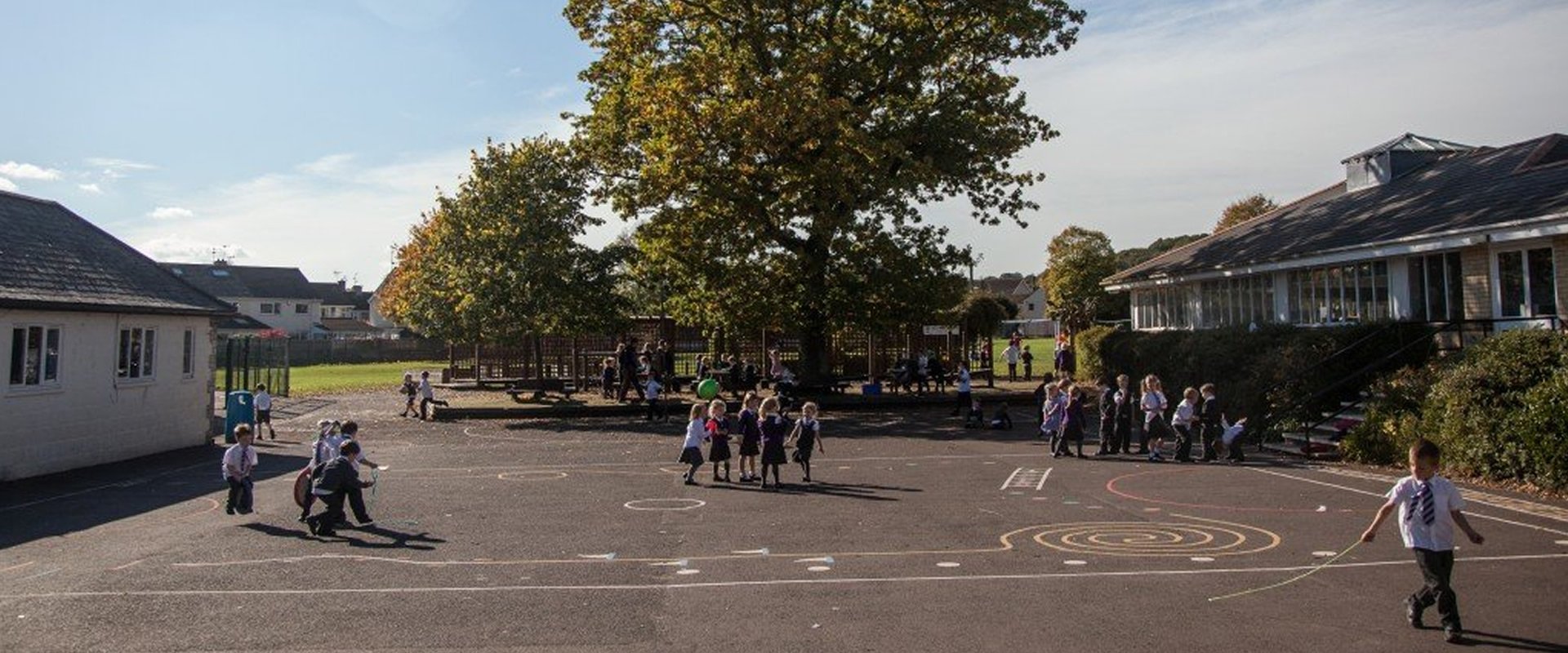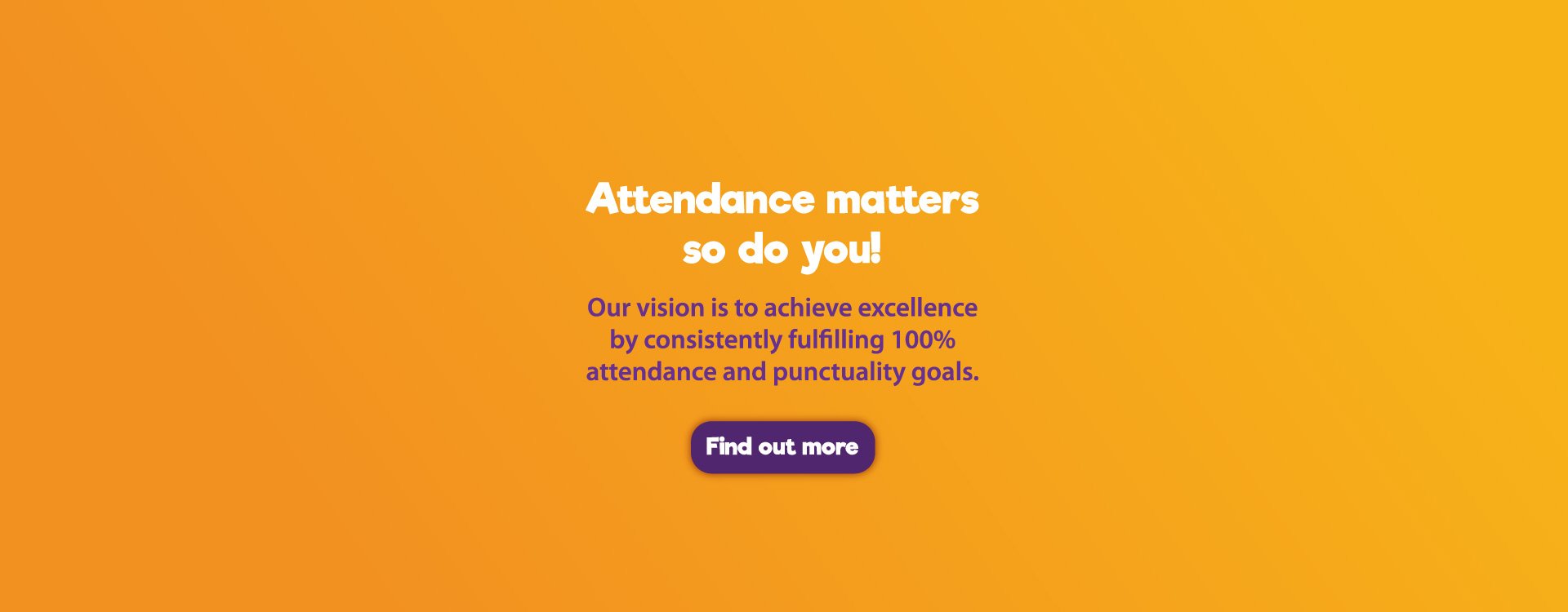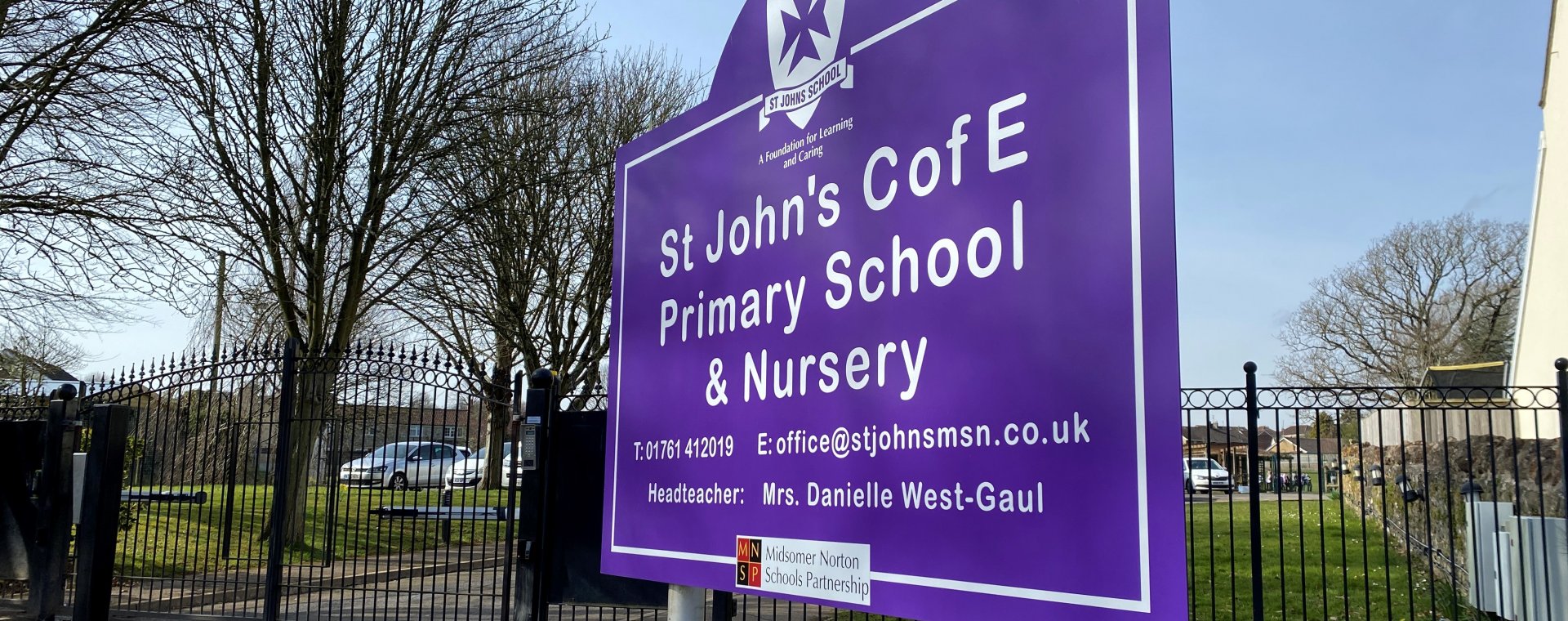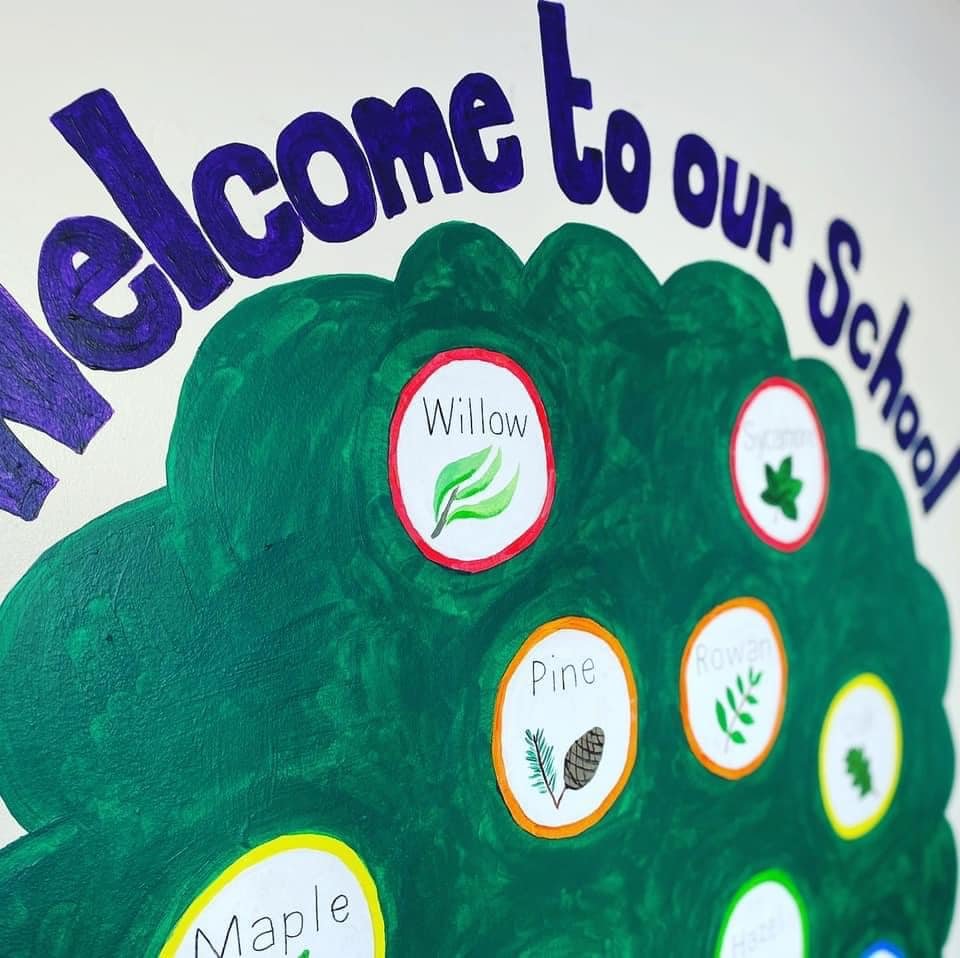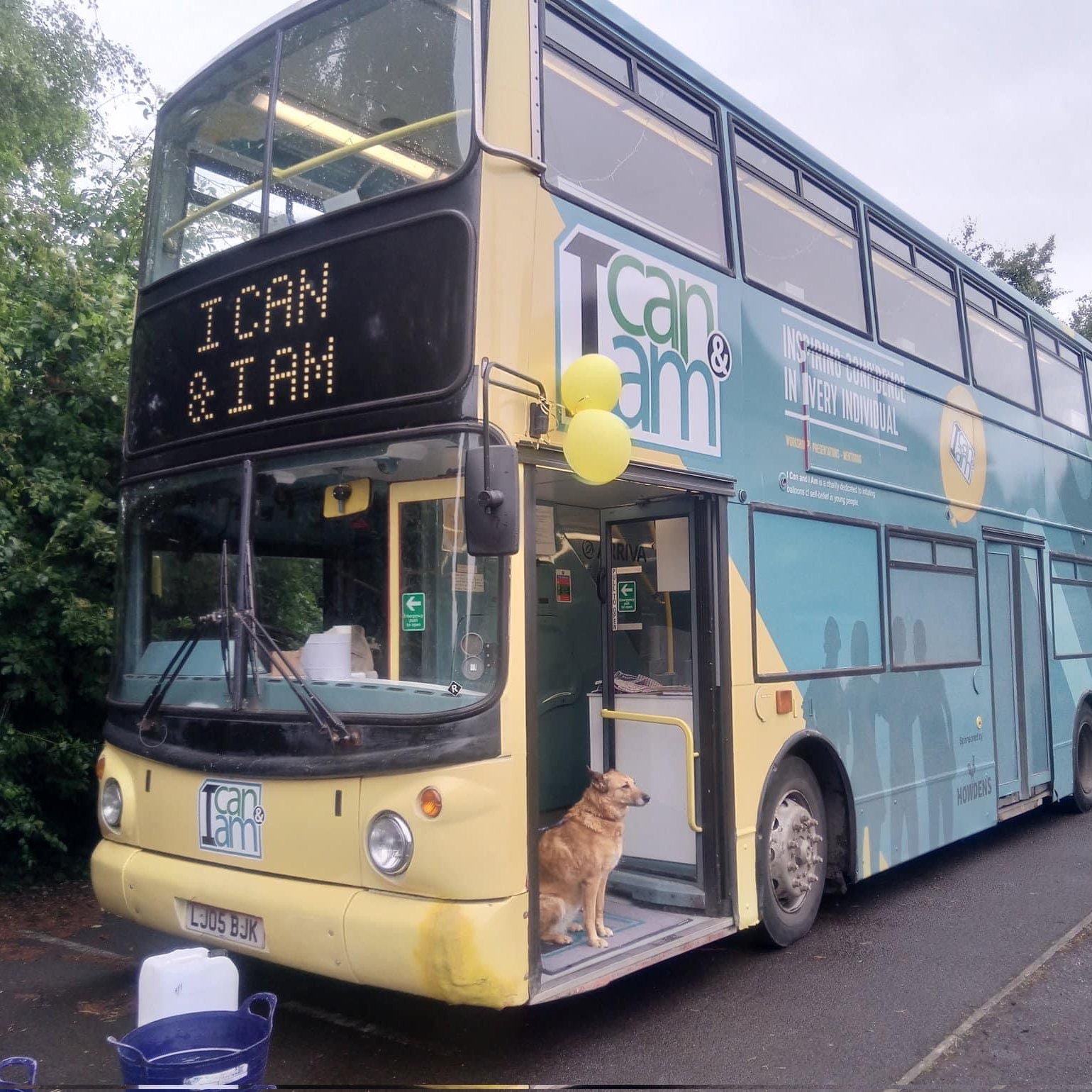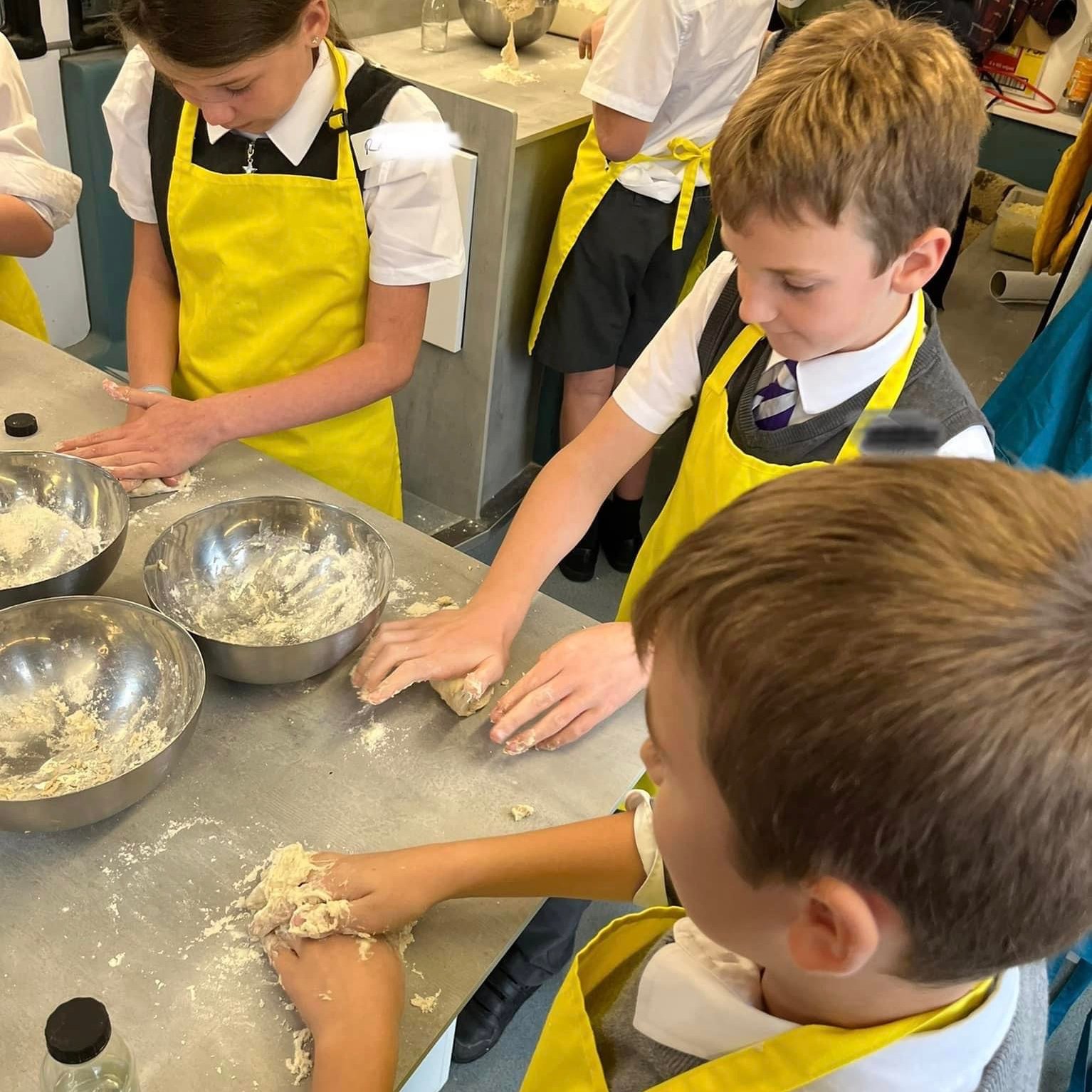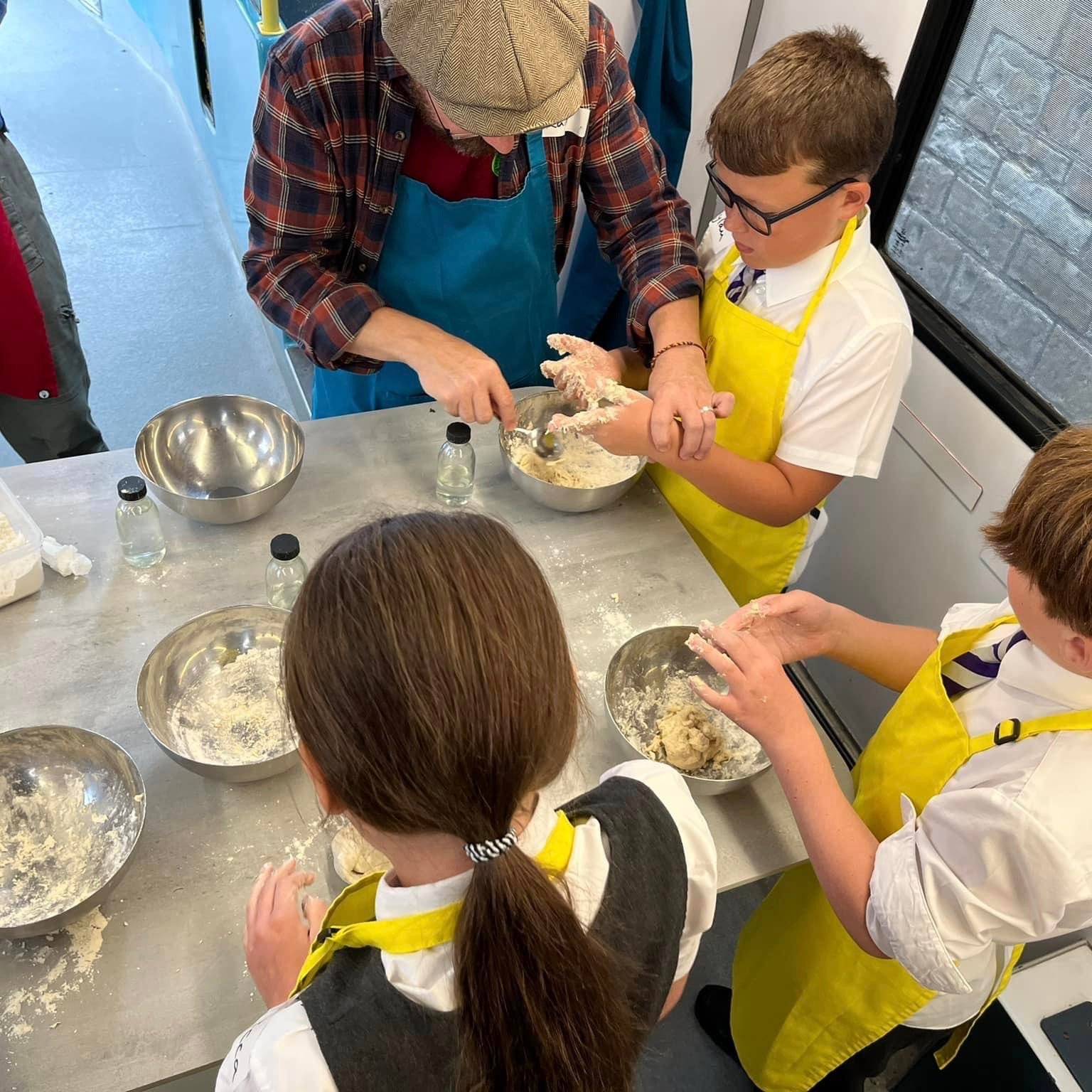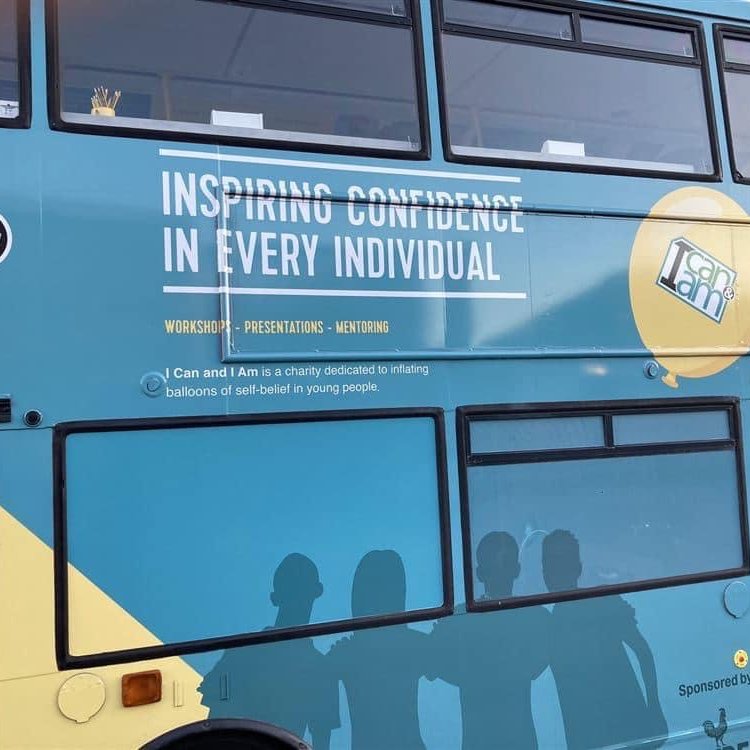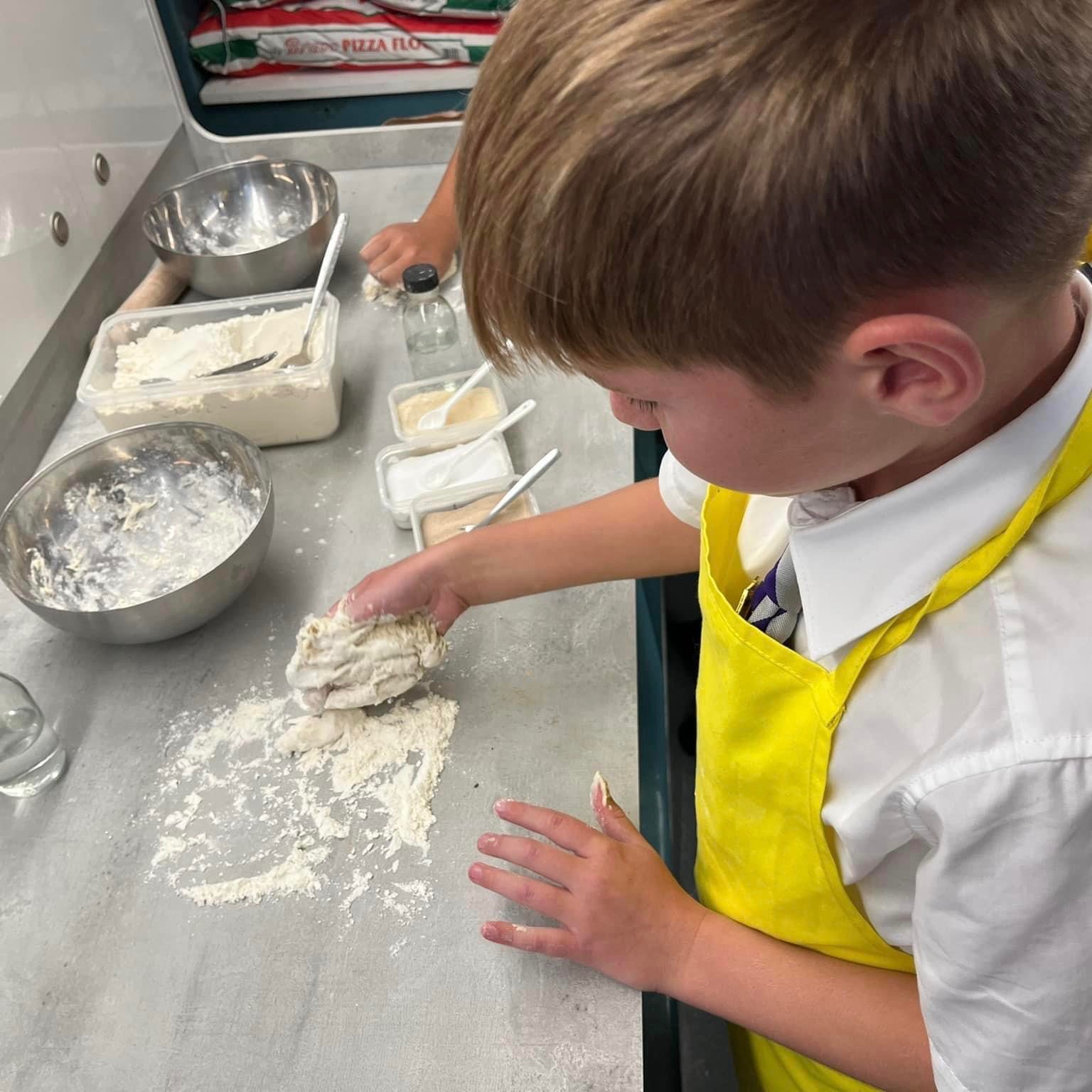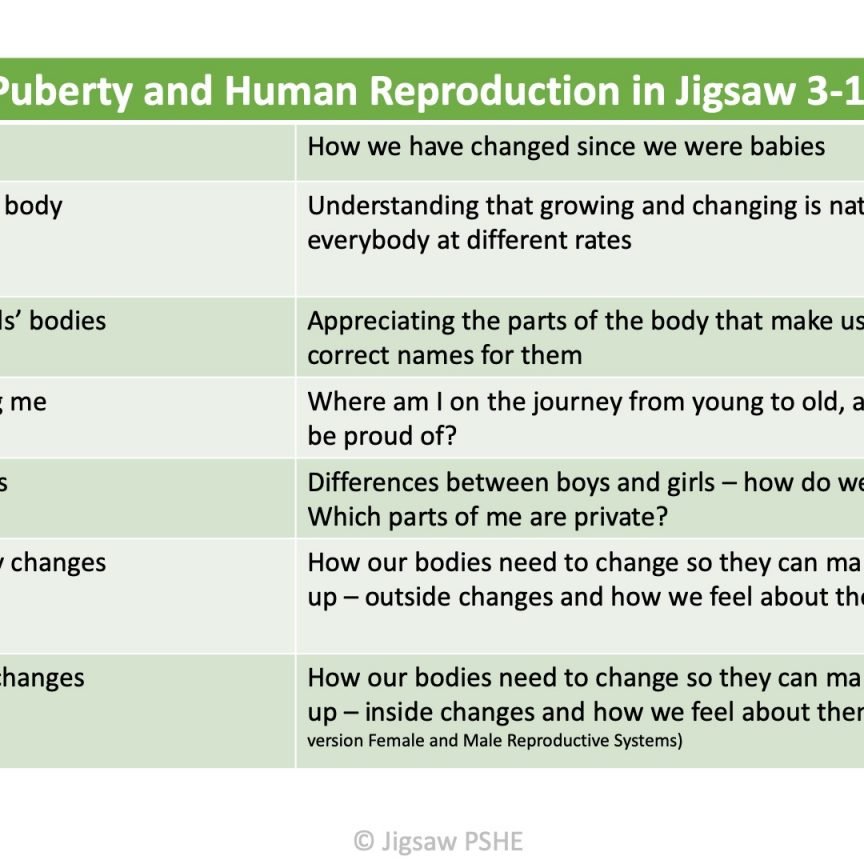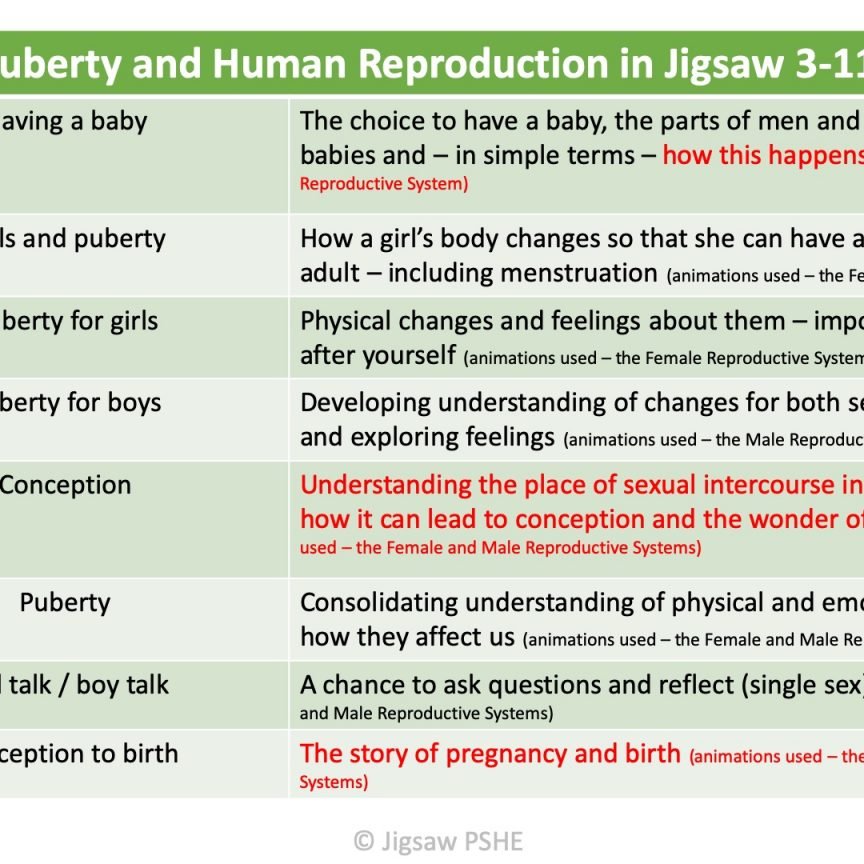| Year Group |
Puzzle (unit) |
Piece (lesson) |
Content |
Link to safeguarding |
| F1/2 |
Celebrating Difference |
6 – Standing up for yourself |
Children learn how to improve things if they don’t like what someone says or does to them. |
Children are given the opportunity to practise the phrase, ‘Please don’t do that, I don’t like it’; they are also reminded that if someone says that to them, they have to stop whatever they are doing to cause another children to say the phrase. |
| F1/2 |
Healthy Me |
6 – Stranger Danger |
Using stories like ‘Never Talk To Strangers’, children discuss with suggestions about what they could do to keep themselves safe. |
Children are encouraged to think about what they could do if they don’t feel safe, and who they can go to if they feel unsafe. The message. ‘Say NO and DON’T GO!’ is reinforced throughout the lesson, particularly when discussing grown-ups who approach children inappropriately and ask for their help. |
| F1/2 |
Relationships |
4 & 5 – Falling out and bullying |
Children explore how they feel if someone says something unkind to them. |
These lessons encourage children to take responsibility for their words and actions and to help them know who to go to if they need help. |
| F1/2 |
Changing Me |
2 – Respecting my body |
Reinforcing the concept that out bodies are precious and need looking after. |
This lesson helps to reinforce how children can take responsibility for their bodies (to a point) and how to look after themselves. |
| 1 |
Celebrating Difference |
3 – What is bullying? |
Children learn about what bullying is and how it might feel to be bullied; they also identify who they can talk to if they are unhappy or being bullied. |
This lesson, and indeed the whole Puzzle, reinforces the messages about tolerance, difference and similarity, and how to be a better friend, and how to deal with bullying if it arises. |
| 1 |
Celebrating Difference |
4 – What do I do about bullying? |
| 1 |
Relationships |
4 – People who help us |
Using the scenario cards (or make up your own), children act out scenarios showing when they can ask for help and from whom they can receive help. |
If children find something unsuitable on a computer, or see/hear something that they feel uncomfortable about, practise with them who they can ask for help and what they can say. |
| 1 |
Changing Me |
4 – Boys’ and Girls’ Bodies |
Children identify the parts of the body that make boys different to girls and can use the correct, scientific names for them |
By using correct terminology for part of the body, children can learn to respect their own and others’ bodies and understand which parts are private (meaning ‘special and important’, not ‘guilty’ or ‘not very nice’). |
| 2 |
Celebrating Difference |
3 – Why does bullying happen? |
Identifying that bullying is sometimes about difference allows children to understand more and to decide not to bully. |
This lesson, and indeed the whole Puzzle, reinforces the messages about tolerance, difference and similarity, and how to deal with bullying if it arises (where to go for help, what to say and do in a bullying situation). |
| 2 |
Celebrating Difference |
4 – Standing up for myself and others |
Children are empowered to know what is right and wrong and to look after themselves. |
| 2 |
Relationship |
2 – Keeping safe – exploring physical contact |
The lesson focuses on how there are many different forms of physical contact within a family – and some of this is acceptable and some is not. |
Children can think about which types of physical contact they like, which they don’t like, and they can talk about this in a safe way. Some of the lesson is taught through stories. Teachers are encouraged to be vigilant throughout this lesson. |
| 2 |
Relationship |
4 – Secrets |
Children learn that sometimes secrets are good and sometimes they are not good – and how they feel if they are asked to keep a secret they don’t want to keep, and who to talk to about it. |
Through understanding about good secrets and ‘worry’ secrets, children can practise giving advice to Jigsaw Jo to help with any ‘worry’ secrets. Teachers can emphasise that ‘worry’ secrets need to be told to an adult and not kept inside. |
| 3 |
Celebrating Difference |
2 – Family conflict |
This lesson explores how sometimes conflict occurs in families and how children can calm themselves down and use solution techniques to help themselves. |
Using the story, ‘And Tango Makes Three’, children think about a possible source of family conflict and think of ways to help solve it. Teachers need to be aware of all children’s domestic situations (particularly any that may be violent) before teaching this lesson; notes in the lesson plan are provided to help. |
| 3 |
Celebrating Difference |
3 & 4 – Witness and feelings & Witness and solutions |
Children learn that the role of witnesses in bullying situations, and that sometimes a witness can hinder rather than help. |
Homophobic bullying is covered in these lessons, as well as what children can do if they see bullying taking place. The Jigsaw ‘Solve It Together’ technique is especially helpful for children to have a strategy to help themselves and others. |
| 3 |
Healthy Me |
4 – Being safe |
Children identify things, people and places that they need to keep safe from, and can share some strategies for keeping themselves safe, including who to go to for help. |
Using the ‘We are keeping safe from…’ cards, children can come up with strategies for Jigsaw Jino to keep safe in different situations, including online. Children can also complete the ‘Keeping Safe’ templates to form their contributing chapter for the school’s Healthy, Happy Me Recipe Book (assessment task). |
| 3 |
Relationships |
3 – Keeping myself safe |
Children discuss things that they might need to keep safe from and complete a ‘keep safe’ label template. |
In discussions, teachers can draw out of children that they might need to think about keeping safe, including when they are online. |
| 4 |
Celebrating Difference |
3 – Understanding bullying |
Reinforcing the messages from previous year groups, this lesson focuses on more surreptitious bullying and how to better understand bullying behaviour. |
For older children, it is timely to look at the intricacies of bullying and how sometimes it can be difficult to spot. Teachers are encouraged to know what the school’s anti-bullying policy states and to ensure that this lesson adheres to the guidance. |
| 4 |
Healthy Me |
5 – Healthy Friendships |
This Piece looks at how children can learn to recognise when people are putting them under pressure and how to resist this when they want. |
Through the context of healthy friendships, children can explore their possible feelings of anxiety and fear and how this might be associated with peer pressure; it could also be applied to the pressure they might feel from other people. |
| 4 |
Healthy Me |
6 – Celebrating My Inner Strength and Assertiveness |
Helping children learn that they can have a clear picture of what they believe is right and wrong, and to know how to be assertive when they need to be. |
Children can learn to draw on their own sense of right and wrong to help make decisions that suit them. Using some simple assertiveness techniques can help children feel more empowered in their lives and can help to keep them from harm. |
| 5 |
Celebrating Difference |
2 – Racism |
Children learn about what racism is and how their own attitudes can affect how they treat others. |
Learning Clips and stories are used to introduce the concept of racism and discrimination to children and they are invited to share their thoughts. Particular emphasis is given to the words that people use, often without understanding them, and how they can be racist. |
| 5 |
Celebrating Difference |
3 & 4 – Rumours and name-calling & Types of bullying |
Children learn about how rumours are spread and how name-calling can both be bullying behaviours. They also learn the difference between direct and indirect bullying. |
Both lessons help children to learn ways that they can be empowered to help themselves, and to report anything that feels wrong to them. |
| 5 |
Relationships |
3 – Girlfriends and Boyfriends |
Through discussion and activities, children understand that they have a choice about whether to have a girlfriend/boyfriend and that they are under no pressure to do this (assertiveness). |
Children look at appropriate and inappropriate behaviour, including physical contact. The emphasis in the lesson is that there is absolute need for both people in a relationship to show and to expect complete respect for each other’s feelings and choices; this concept can easily be applied to other situations that some children may be in. |
| 5 |
Relationships |
5 & 6 – Relationships and Technology |
Two lessons on staying safe when using technology. Children learn to recognise and resist pressure to use technology in ways that may be risky or cause harm to others. |
The CEOP ThinkUKnow video is used to demonstrate to children what can happen online. To create a balanced view, children are also encouraged to share what is good/useful about the internet.A ‘Personal Record Sheet’ activity highlights to children the importance of being vigilant online and not posting personal information. |
| 6 |
Celebrating Difference |
2 – Understanding disability |
Children learn about how having a disability could affect someone’s life. |
Using a video clip of boys with cerebral palsy, children can relate more readily to someone who has a disability and what that may mean for them. Children are encouraged to put themselves in someone else’s shoes, to try to better understand difference – and not to feel fearful of difference. |
| 6 |
Celebrating Difference |
3 – Power struggles |
Children explore power in different contexts – how sometimes it is needed, and how sometimes it is unwarranted and can feel unsafe. |
This lesson focuses on cyber-bullying and how to deal with it if it happens. The teacher notes give guidance on how to help children if they are in this situation, in line with the school’s anti-bullying policy and CEOP’s guidance. |
| 6 |
Celebrating Difference |
4 – Why bully? |
Children learn about some of the reasons why people bully, using various example scenarios. |
Children are encouraged to practise and use a variety of strategies in managing their feelings in bullying situations – and how they can help solve problems if they are part of a bullying situation. |
| 6 |
Relationships |
4 – Power and Control |
Returning to more assertiveness training, where children learn to recognise when people are trying to gain control or power, and how they can stand up for themselves (and their friends) in situations when others try to gain control or power. |
Power and Control headlines and scenario cards are used to facilitate discussion among the children so they can decide on whether someone is being ‘controlling’ – and then to practise some helpful assertiveness techniques, which demonstrate how to deal with some of these situations. |
| 6 |
Relationships |
5 – Being Safe with Technology 1 |
Linked to previous lessons, children learn how technology can be used to try to gain power or control, and to be able to use strategies to prevent this from happening. They are also taught how to take responsibility for their own safety and well-being. |
A short film about cyber-bullying is used to explore the use of text messages and e-mails – and how they can be used on hurtful ways. Online scenarios are the basis for discussions about what to do in difficult situations online or on phones. Children are reassured that they can talk to a trusted adult about anything that might be worrying them online or on phones. |
| 6 |
Relationships |
6 – Being Safe with Technology 2 |
In part 2 of the safety and technology lessons, children learn to use technology positively and safely to communicate with friends and family, whilst taking responsibility for their own safety and well-being. |
A ‘Keeping Myself Safe Online’ quiz is used to highlight some of the key messages from this and previous lessons, demonstrating how children have the right to be safe online too. Their learning is shown in the production of group videos about how children can be safe with technology and enjoy it. |

